Peru protesters defy state of emergency to push for president's ouster
Hundreds of anti-government protesters have taken to the streets in the Peruvian capital again, facing down police in riot gear and tear gas.
Protesters are demanding the resignation of President Dina Boluarte, early new elections, the shutdown of the congress, and a new constitution to replace one dating back to Alberto Fujimori in the 1990s.
The protests began in December when the then president, Pedro Castillo, was ousted. More than 50 people have been killed as a result of the unrest.
In Puno, southern Peru, soldiers and police confronted demonstrators demanding the release of former president Castillo. Authorities said they unblocked the main roads in the region, which had been blocked for a week.
From Jan. 19, the unrest has concentrated in the capital city as protesters from different Peruvian regions gathered for the "Take over of Lima" march demanding the president's resignation.
The government has declared a state of emergency in the capital of Lima and three other regions, but protesters remain defiant.
Protests have been fueled by anger in poor rural regions in the south where inhabitants -- mainly Indigenous -- say Castillo, who has Indigenous roots himself, represented their interests rather than those of the Lima elite.
Rights organizations have accused the government of repressing protesters and the disproportionate use of force.
On January 9, 18 people were killed after protesters tried to storm the airport.
Lawyer Mar Perez accused authorities of extrajudicial killings and claimed security forces used machine guns.
"We are seeing levels of repression that are unprecedented in Peruvian democracy," Perez told AFP.

Canada arrests prominent activist over pro-Palestinian stance
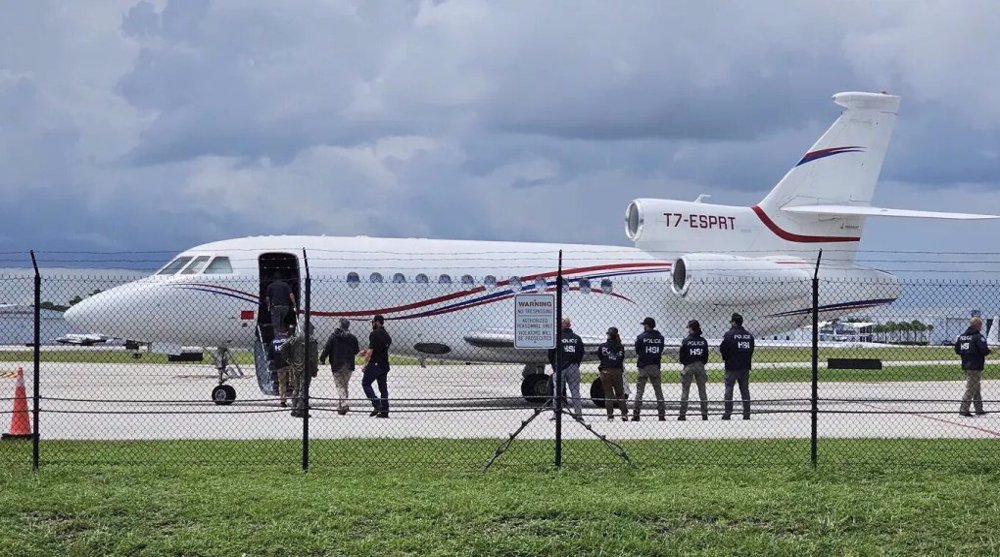
US to seize 2nd Venezuelan plane held in Dominican Republic
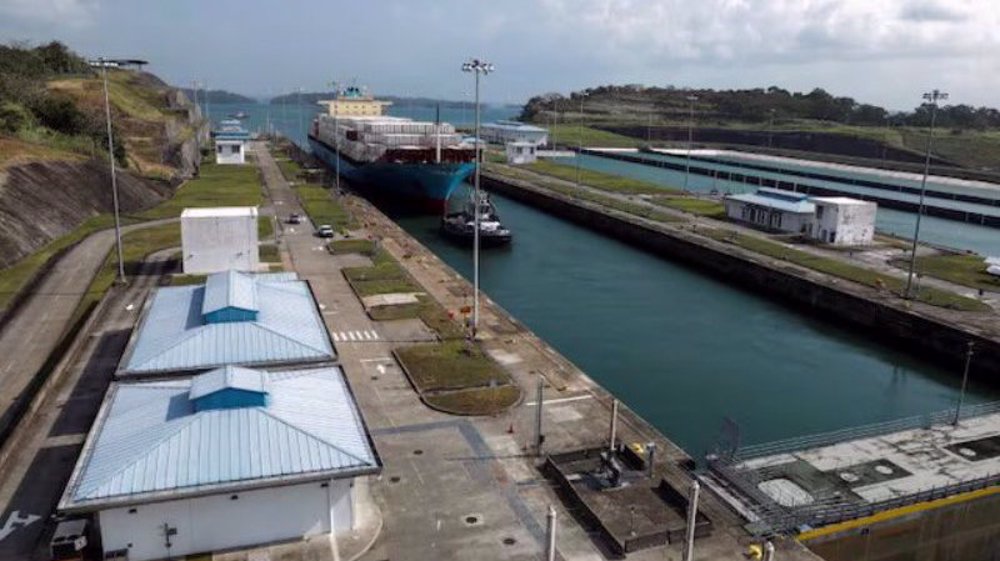
Panama Canal denies claim of free passage for US vessels
Israel’s massacres won’t grant it ‘legitimacy’: Hamas on 31st anniversary of Ibrahimi Mosque tragedy
French leader decries ‘unprecedented diplomatic scandal’ after Israel bars European MPs
VIDEO | Washington’s failed projects
VIDEO | Islamabad exhibition exposes Israeli atrocities in Gaza
Trump rescinds arms sales regulation in favor of Israel, sources say
Iran’s president vows to accelerate cooperation with Russia
Palestinian says Israeli jailers poured acid on him during interrogation
Iran, Turkmenistan seek increased cargo transit via railways


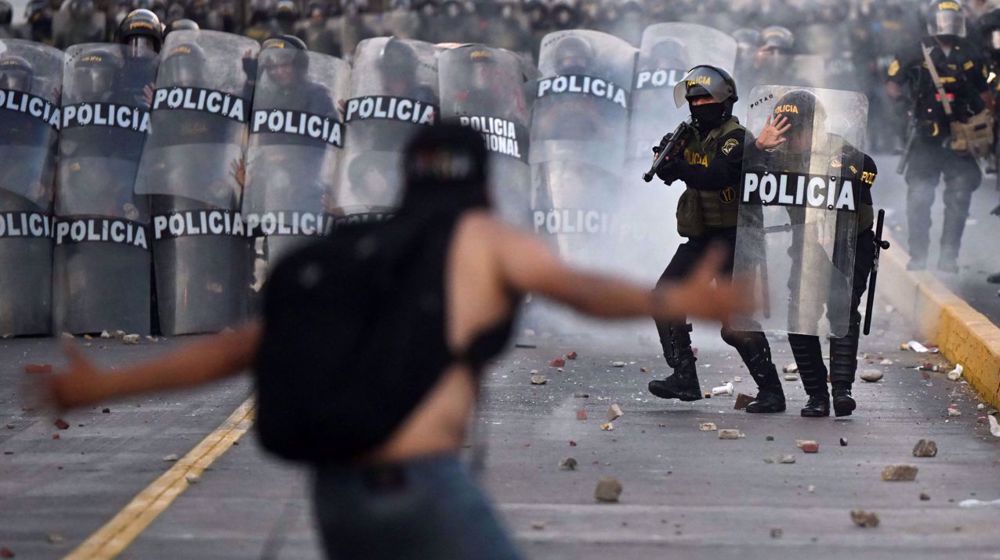
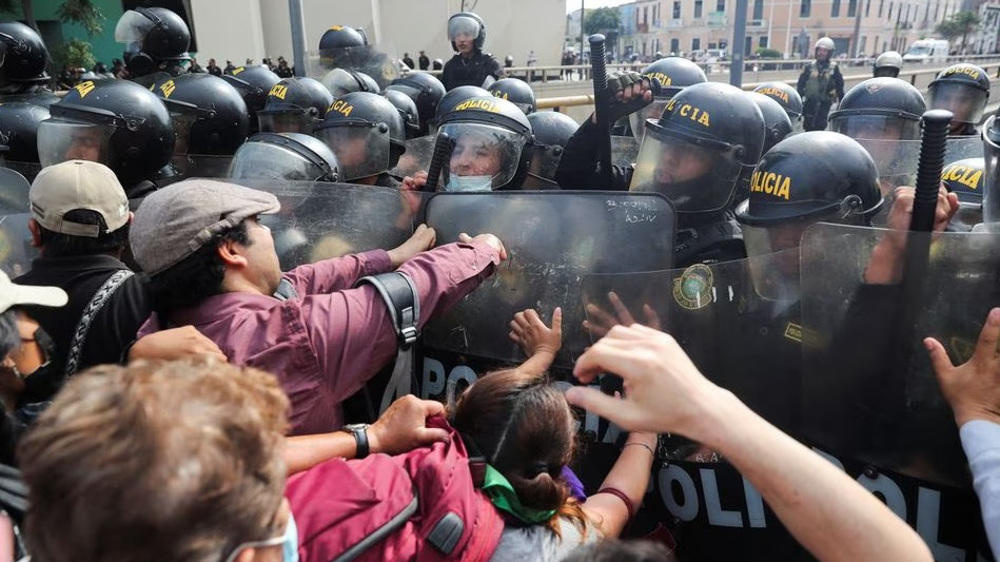



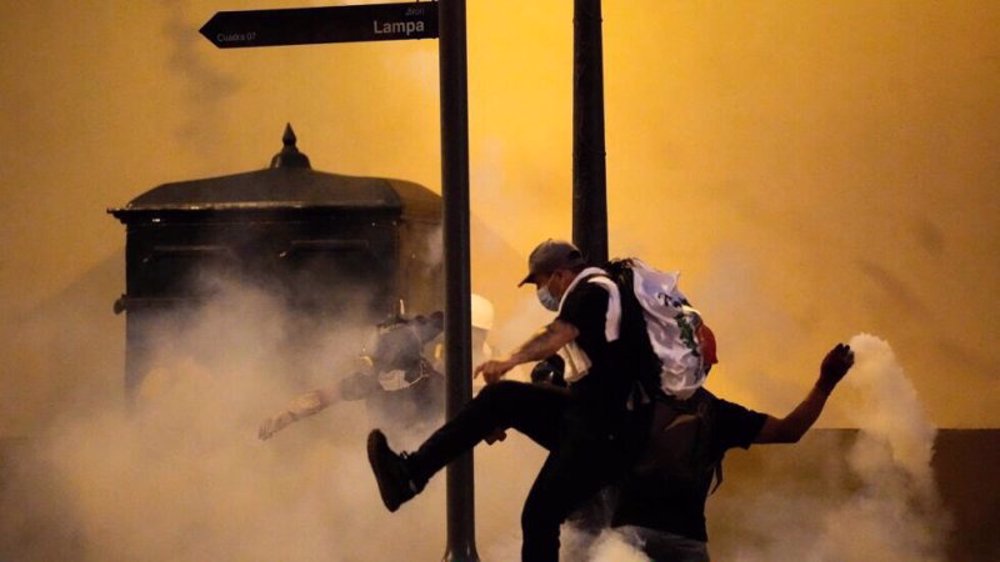
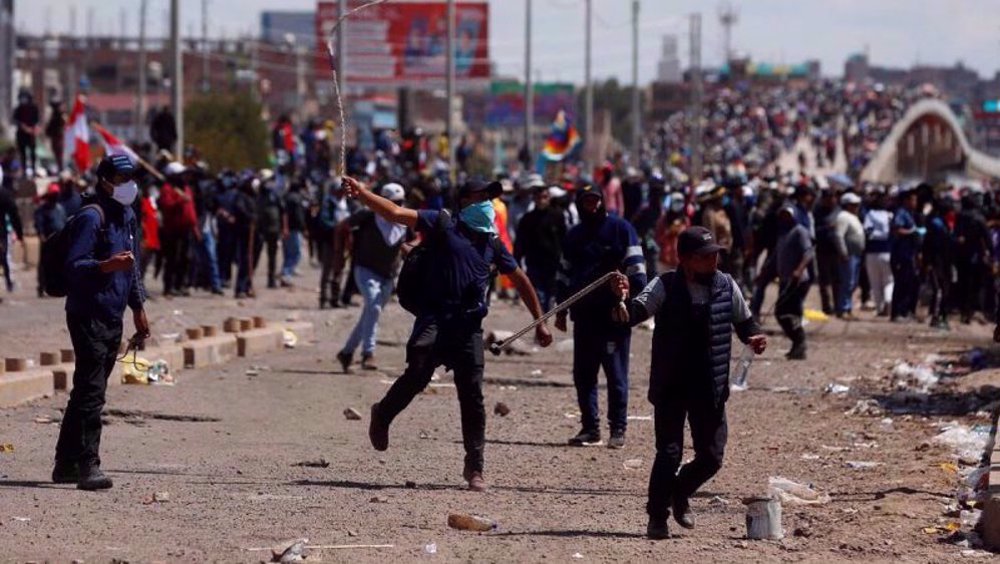
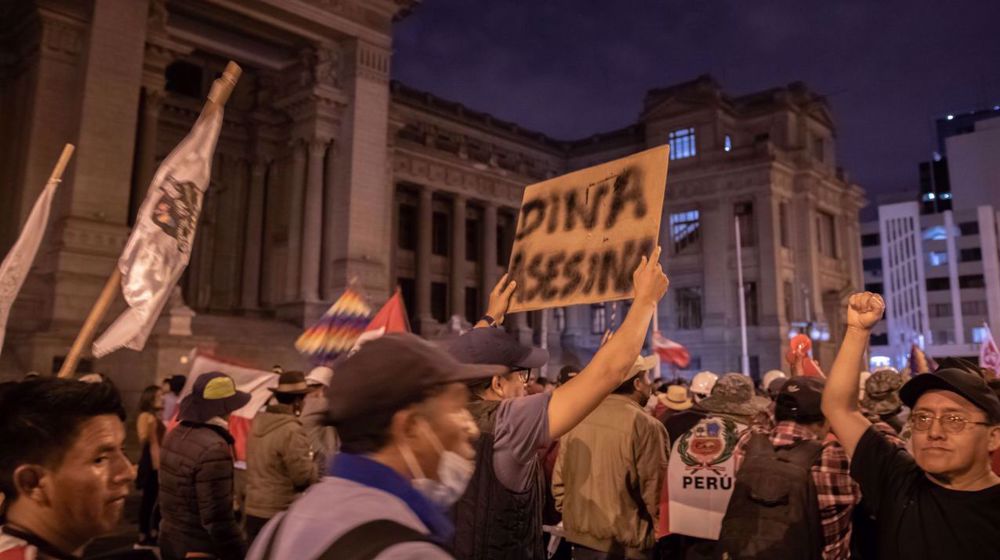
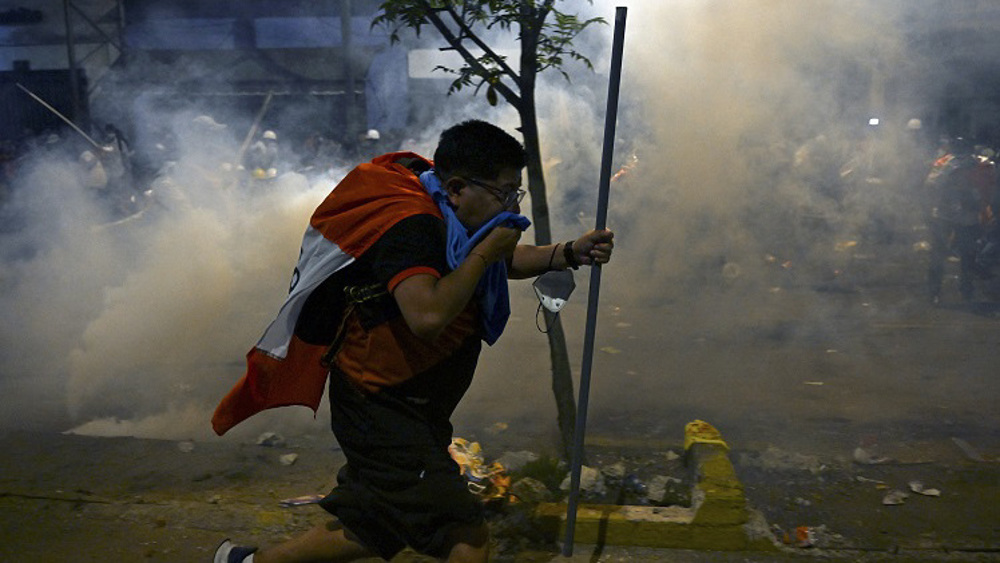
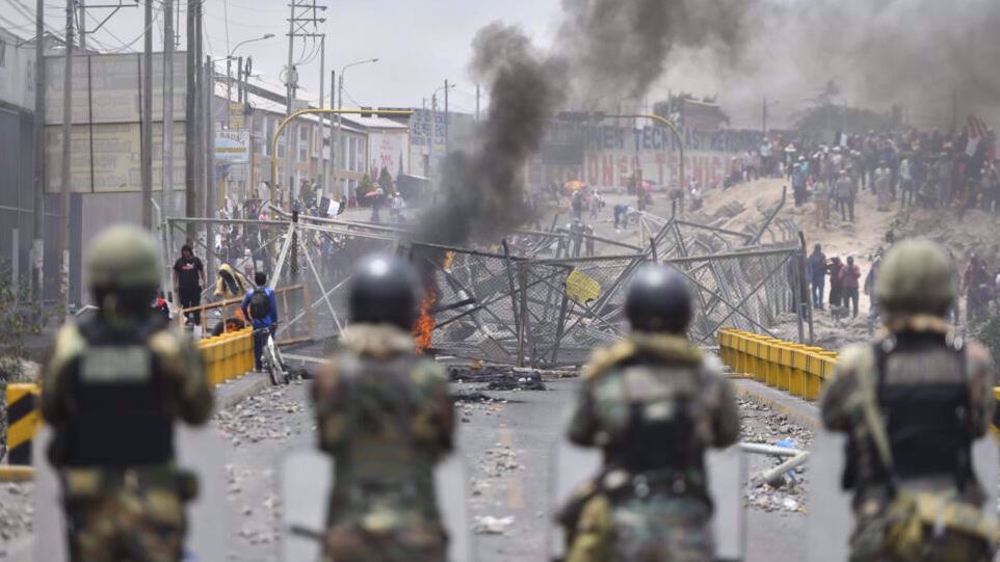



 This makes it easy to access the Press TV website
This makes it easy to access the Press TV website